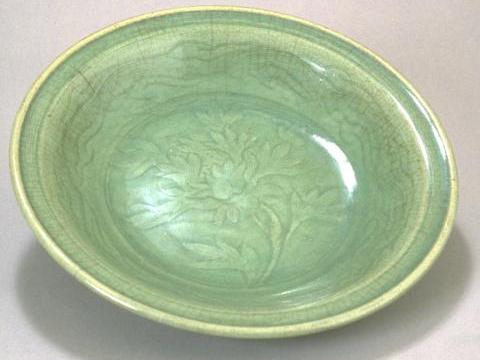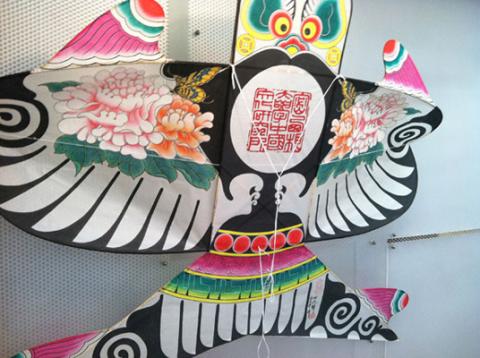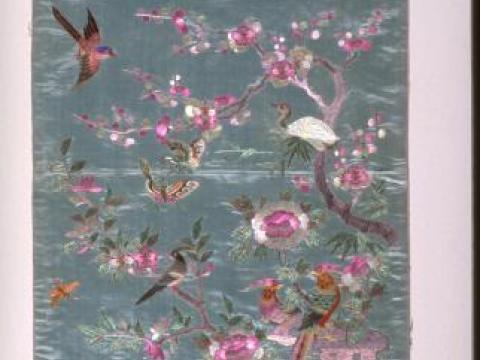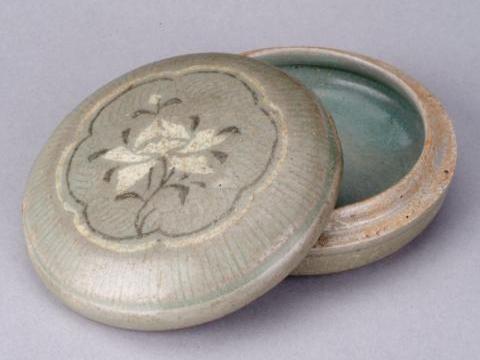Peony Garden
At Nichols Arboretum
- Gardens & Collections
- Garden
- Worldwide Connections of Peonies
World Connections
Connections
Peonies are culturally important across the arts and sciences in China, Japan, and Korea. Each culture adds distinctive contributions to the history of peonies in human civilization.
The University of Michigan has strong connections and partnerships across eastern Asia. Our peony garden engages in projects and programs to deepen the links among our students, faculty, communities and international partners.
The China Connection & The Lieberthal-Rogel Center for Chinese Studies

China. 15th century. Platter with incised peony pattern. Stoneware with celadon glaze.
University of Michigan Museum of Art, Gift of Stephen H. and Patricia O. Spurr from the Henry Jewett Greene Collection 2000/1.24
We collaborate with scholars on understanding peonies in Chinese culture. Our inaugural inter-disciplinary program was given by Dr. R. Hammers on peonies in the Sung Dynasty arts. Dr. Hammers, an art historian on the faculty of the University of Hong Kong, presented our 90th Anniversary Lecture in March, 2012.
With University of Michigan partners:
Each year we collaborate with the Confucius Institute and present an annual program of Chinese flower music – in the peony garden – with additional university and community partners.
The Lieberthal-Rogel Center for Chinese Studies
More Information
View the 50 minute video presentation “The Pleasures of the Peony in Chinese Art: Regarding the Floral Temptress in the Song Dynasty.”
More Information
Dr. Hammer’s bibliography of Chinese and English language resources
Ha Yiqi's kite celebrating our peony collection.
Master kitemaker Ha Yiki helped the Center for Chinese Studies celebrate its 50th anniversary in 2011. His, and other kites, were flown here at the Nichols Arboretum.

Kite by Ha Yiqi
Floral brocade
19th century Chinese cuff band with flowers and birds under plum and peony blossoms. Embroidered silk.

University of Michigan Museum of Art, Gift of Mr. and Mrs. Herbert W. Johe 1989/2.35.1
In the Peony Garden

Live tree peony flower. Tree peonies descended from wild Paeonia rockii have dark floral splotches.
Photo credit: Michele Yanga
Tree peonies, as Paeonia suffruticosa and P. rockii, as well as the common herbaceous peony, Paeonia lactiflora are native to China and have been used in traditional medicines. The tree peonies, or ‘mou dan’ are exalted in Chinese culture and art. Numerous festivals are held each year to celebrate the blooming of these spectacular flowers. Herbaceous peonies, or ‘sho ya’, are less exalted.
In 2012 we received our first shipment of historic tree and herbaceous peony cultivars from Luoyang, an historic center of peonies. Assisting us is the Luoyang Flowers and Trees Company. These are planted in the peony garden according to our Peony Garden Rejuvenation Plan (PDF).
The classic Chinese tree peonies are planted above the stone wall near the center of the peony garden. The historic herbaceous Chinese cultivars are planted in Bed 11.
More Information
Luoyang Flowers and Trees Company
The Japan Connection & The Center for Japanese Studies

Live tree peony flower. Tree peonies descended from wild Paeonia rockii have dark floral splotches.
Photo credit: Michele Yanga
With University of Michigan Partners:
We are quietly working on meaningful programmatic ties with colleagues and community members. With the help of a graduate student, we have been able to have translated important elements of Miyazawa’s rare manuscript, including the chapter on peonies of the pre-Tokugawa Period (before 1603.)
In the Peony Garden:
Although tree peonies (‘botan’) and the common herbaceous peony (‘shakuyaku’) are not native to Japan, they have been cultivated and prized for nearly a millennium. Classic Japanese selections of tree peonies have been received from a Japanese broker, through our collaboration with our Peony Advisory Board and its international contacts.
These tree peonies are planted above the stone wall near the west end of the Peony Garden, and it is hoped they will bloom in 2016. Historic selections of herbaceous peonies have been recorded since 1681 in Japan. As we are able to obtain representative selections, we will dedicate Bed 8 to them.
The Center for Japanese Studies
The Korean Connection &
The Nam Center for Korean Studies

Korea. 12th century. Cosmetic Box with inlaid peony design: 6-lobed shape to lip top
University of Michigan Museum of Art, Gift of Bruce and Inta Hasenkamp and Museum purchase made possible by Elder and Mrs. Sang-Yong Nam 2004/1.24A&B
With University of Michigan Partners:
We are quietly working on meaningful programmatic ties with colleagues and community members.
In the Peony Garden:
We will be adding tree and herbaceous peonies reflective of Korean aesthetics in collaboration with Korean academic and cultural partners.
We are working with diverse sister agencies and institutes here at the University of Michigan as well as in Asia. Together our goal is to create a vibrant living collection and academic resource that will educate the public and the academy about the origins and uses of peonies and their importance in diverse cultures across the millennia. The schematic planting plan is guiding the on-site work that was begun in 2012.